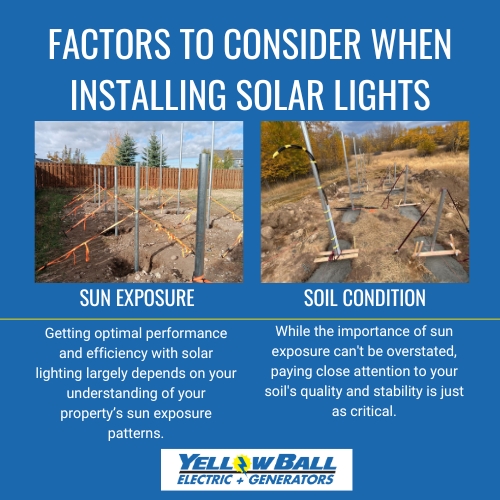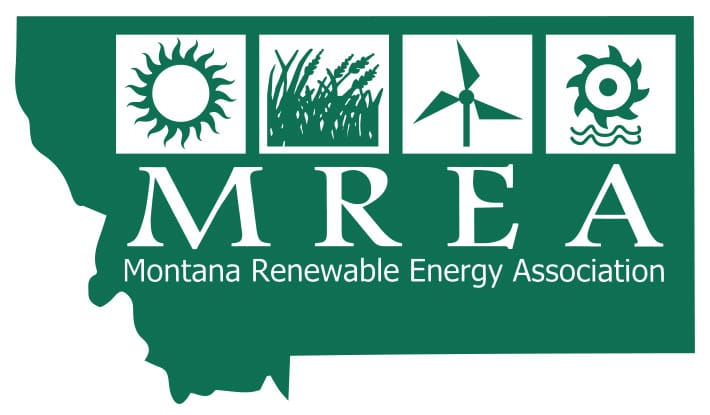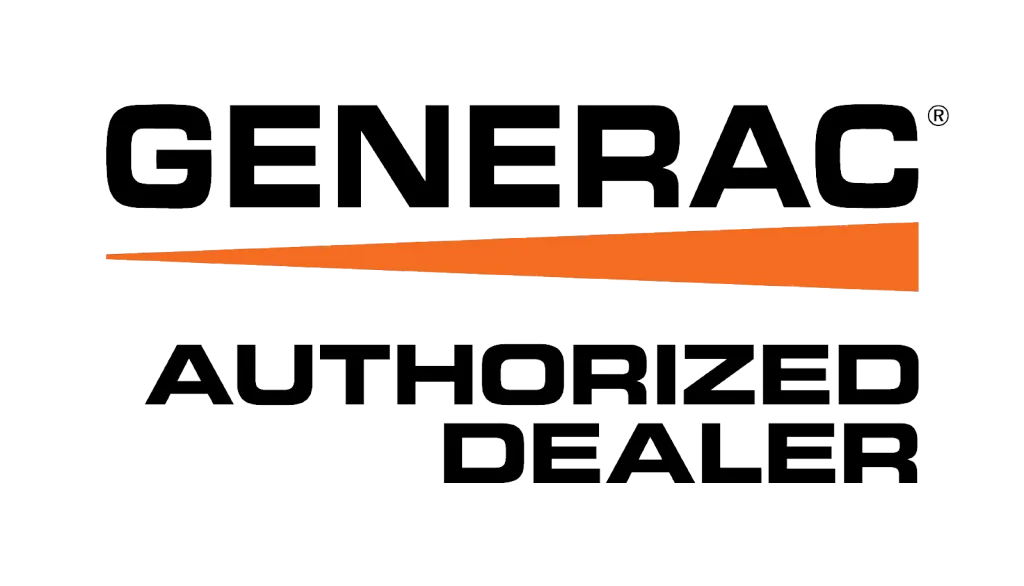Harnessing the sun’s power to illuminate outdoor spaces has revolutionized energy consumption. But, what goes into a successful transition to solar lighting and installation?
We’ll shed light on important factors to consider, addressing the nuances often overshadowed in general discussions.
Deciding to go solar lighting and installation involves careful planning. You must assess your needs and align them with practical considerations.
From understanding how solar energy works to the installation process, each step plays a crucial role in your solar lighting system’s efficiency and longevity.
Get ready to rev up your power independence! Tired of unsustainable energy habits? Break free with YellowBall Electric + Generators!
Our consultation team is ready to listen, understand your needs, and craft a sustainable energy plan that’s uniquely yours.
How Solar Lights Work
The magic of solar lighting captures sunlight during the day, converts it into electricity, and powers lights throughout the night.
At the heart of this solar powered operation is the photovoltaic cell, a key component of the solar panel sub-system.
This cell directly converts light energy from the sun into electrical energy. This energy is stored in a solar battery sub-system, ensuring your solar lighting and installation remain illuminated even after sunset.
Types Of Solar Lighting
Before settling for any given product, it’s important to consider your needs, aesthetic preferences, and the area you want to illuminate.
For instance, pathway lighting offers subtle illumination guiding foot traffic, while floodlights provide a powerful beam for commercial solar street lights and security purposes.
It is also crucial to note that these types of solar lights differ in functionality and technology.
Some solar lighting and installation solutions combine everything into a single unit for easy installation, while others utilize separate panels, batteries, and fixtures offering greater flexibility and efficiency.
Let’s break down some key types of solar lighting solutions.
| Type | Features | Uses |
|---|---|---|
| Solar Pathway Lights | Compact size, low-intensity lighting | Illuminating walkways, driveways, and gardens |
| Floodlights | High-intensity lighting, adjustable angles | Security lighting, highlighting architectural features |
| Spotlights | Focused beam, accent lighting | Highlighting trees, statues, and landscape features |
| Post Lights | Decorative designs, provide ambient light | Adding elegance and illumination to walkways, patios, and entryways. |
Benefits of Solar Lighting and Installation
More and more homeowners are seeking more than just a standard light fixture.
The environmentally friendly approach to outdoor lighting that comes with solar lighting and installation offers many benefits beyond simply lighting up your yard.
Not only does it reduce dependence on grid electricity, thus decreasing carbon footprint, but it also eliminates recurring electricity bills. In the long run, this energy efficiency translates to substantial cost savings.
Besides being good for your pocket and the environment, solar lighting and installation solutions from us here at YellowBall Electric + Generators offer much-needed convenience since most modern options require minimal maintenance.
Solar-powered lights work well in areas with ample sunlight and provide a sustainable approach to illuminating outdoor spaces.
 Factors to Consider When Installing Solar Lights
Factors to Consider When Installing Solar Lights
Proper installation of any electrical device can minimize the risk of issues.
With the right electrical contractor knowledgeable in planning, solar lighting and installation is straightforward.
Here are some things to think about during installation with expert guidance from us here at YellowBall Electric + Generators.
Sun Exposure
Getting optimal performance and efficiency with solar lighting largely depends on your understanding of your property’s sun exposure patterns.
- It’s essential to identify areas in your outdoor space that receive ample sunlight throughout the day.
- Locations shouldn’t have any obstructions like trees or buildings because obstructions can limit a solar panel’s ability to capture adequate sunlight.
- In fact, studies have shown that even a small amount of shade can significantly impact a solar panel’s output.
- Consider using a light meter or even observing the areas throughout the day to determine where the sun hits the longest to ensure maximum sun exposure for your solar lights.
Remember that sunlight is crucial for solar lighting, and correct positioning of panels directly translates to brighter lights and longer operating hours.
Soil Condition
While the importance of sun exposure can’t be overstated, paying close attention to your soil’s quality and stability is just as critical.
- Particularly for larger fixtures like pathway lights, sturdy ground is a non-negotiable factor to avoid the lights leaning or toppling over time.
- Ensure your chosen spot gets enough sunlight and has the soil conditions to offer a firm foundation for the light fixtures.
- Loose or sandy soil can be compacted, or you might need to create a more stable base using gravel or concrete.
Before you install your lights, perform a simple soil test or consult a landscaping expert who can provide guidance tailored to your specific soil type.
Taking these precautions will guarantee secure installation and stability, allowing your solar lights to stand the test of time and weather.
FAQs about Solar Lighting and Installation
Are solar lights easy to install?
Yes, solar lights are generally easy to install, often not requiring any electrical wiring. Most come with simple instructions for either staking them into the ground or mounting them on a wall or fence.
How to install solar landscape lighting?
First, choose a spot with ample sunlight and assemble the lights as directed.
After charging the lights fully (usually 12 hours is sufficient), install them by staking them or securing them to their designated location.
Ensure the solar panels are angled correctly for optimal sun exposure.
Which direction should solar lights face?
For best performance, in the northern hemisphere, aim the solar panels south. This direction captures the most direct sunlight throughout the day.
Adjust slightly eastward or westward as needed to accommodate obstructions such as large trees.
How long does it take to install solar lights?
Most solar light installations can be done within a couple of hours. Basic pathway lights, for instance, are often even quicker.
Factors that might affect the installation time are the soil conditions and the number and type of lights you are installing.
Sustainable Solar Lighting for Brighter Homes in Billings & Bozeman
Solar lighting and installation have emerged as a game-changer for eco-conscious homeowners, offering a compelling blend of aesthetics, sustainability, and long-term cost savings.
When considering lighting solutions, the benefits associated with solar-powered options make them an intelligent choice, illuminating homes and businesses in Billings and Bozeman, MT, with brilliance and sustainability.
Don’t wait for the next power outage or rising energy costs to make a change.
Let YellowBall Electric + Generators guide you toward a more reliable, efficient, and sustainable future with our expert services.
Contact us here at YellowBall Electric + Generators today to get started!




